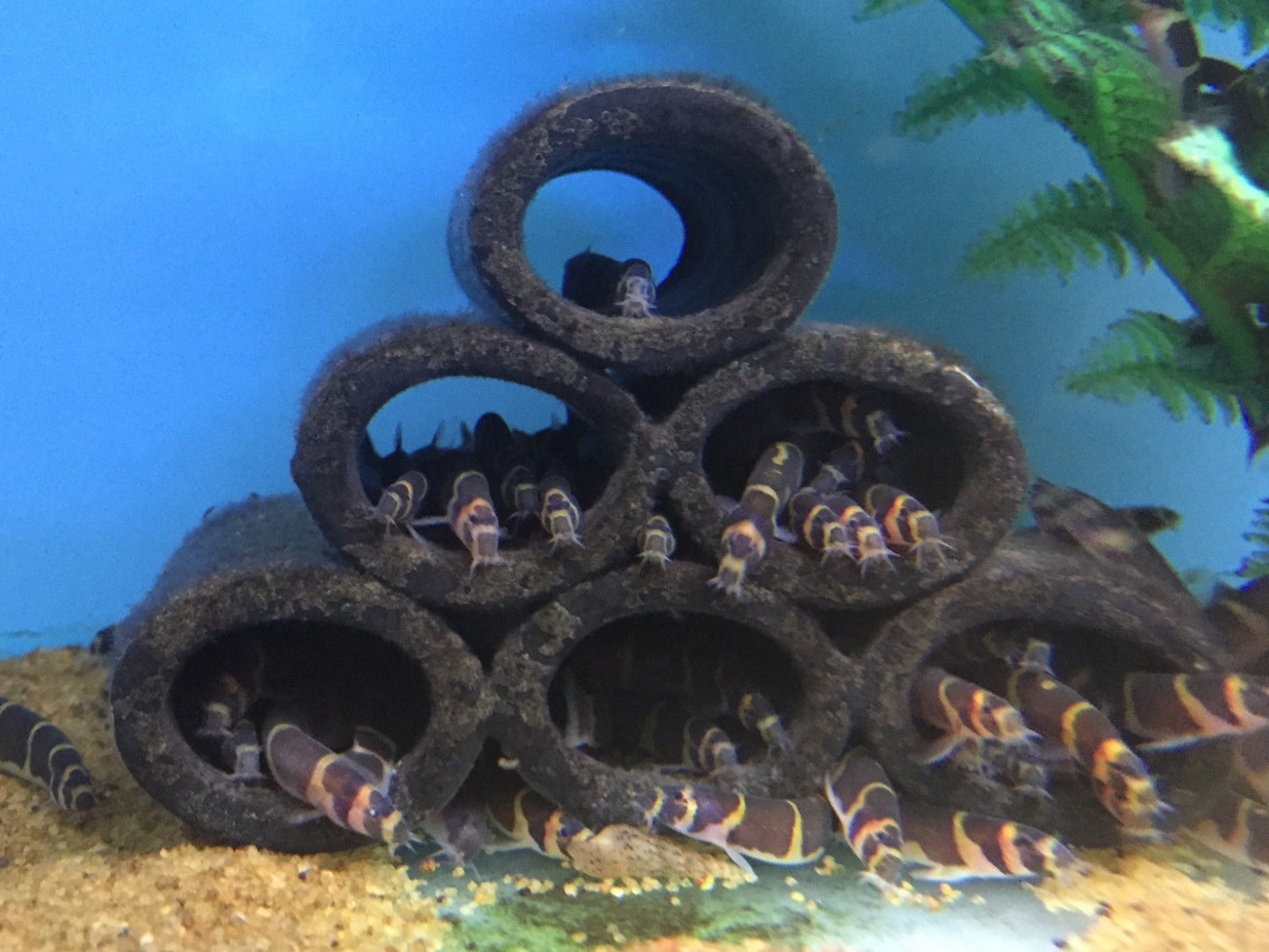Top Fin Aquatics
Banded Kuhli Loach
Banded Kuhli Loach
Couldn't load pickup availability
Overview
Common Names: Kuhli Loach
Scientific Names: Acanthophthalmus kuhlii, Cobitis kuhlii
Origin: Found in Sumatra, Borneo, and Java in Indonesia, as well as Malaysia and Thailand.
Maximum Size: 10 cm (4 inches)
Temperature Range: 24-28°C
Water Conditions: Soft and slightly acidic water is ideal; pH should be between 6.0 and 7.0, with a hardness of up to 12 dH.
Compatibility: Suitable for community tanks
Lighting: Low light preferred
Sexual Dimorphism: Females appear plumper when filled with eggs.
Diet: Enjoys catfish pellets, flake food, and frozen options.
Description
Care Requirements:
Kuhli Loaches are social fish and should be kept in groups of at least five. A well-established tank with a sandy substrate is essential to protect their delicate sensory barbels. They thrive in densely planted areas where they can group together and feel secure. In their natural habitat, these fish live among leaf litter, so adding dried Indian Almond Leaves (Terminalia catappa) to the tank can create a comfortable environment with hiding spots. When keeping smaller Kuhli Loaches, ensure that filter intakes are protected, as they tend to squeeze into small spaces. These peaceful fish do best in quieter tanks with compatible tankmates. There are various striped Kuhli Loach species in Southeast Asia, many of which are often misidentified in the aquarium trade, but most share similar care needs.
Feeding
Kuhli Loaches enjoy sinking catfish pellets and small frozen foods like mosquito larvae, brine shrimp, and daphnia. Smaller loaches will benefit from baby brine shrimp and cyclops. They will also nibble on any flake food that sinks to the bottom of the tank.
Breeding
While there have been occasional reports of unplanned breeding in captivity, these instances are rare. Successful breeding typically occurs in densely planted tanks without predatory fish, or in well-established aquariums with undergravel filters, where the fish can dig beneath the plates. Healthy females often become egg-filled, but the specifics of their spawning behavior remain largely a mystery.
Share




